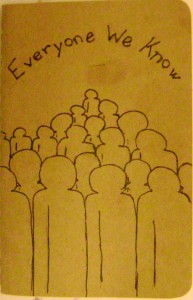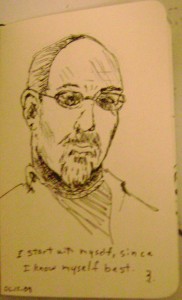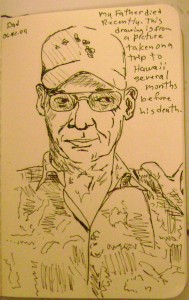
Well I guess I can reveal what I made for my siblings and stepmother, now, since Christmas is over, and I delivered Richard’s today. These are silkscreen, and acrylic on canvas, and are 10×8 inches.
Category Archives: Art
Morning fog


The Doors–People are Strange
Great video. Great art work.
People are strange from Denis Fongue on Vimeo.
George Brecht dies
George Brecht, Fluxus Artist-Provocateur, Dies at 82
Fluxus, the loosely affiliated international group of playful Conceptual artists that emerged in the early 1960s.
I have a tenuous connection to the Fluxus group though one of the professors at my Alma mater (UMO), Owen F. Smith
Some of his work, and some more.
Smith, also wrote Fluxus: The History of an Attitude
Getting it Wrong
This is a student music video. It’s amazing.
New Art Work
Moby Dick, or the Whale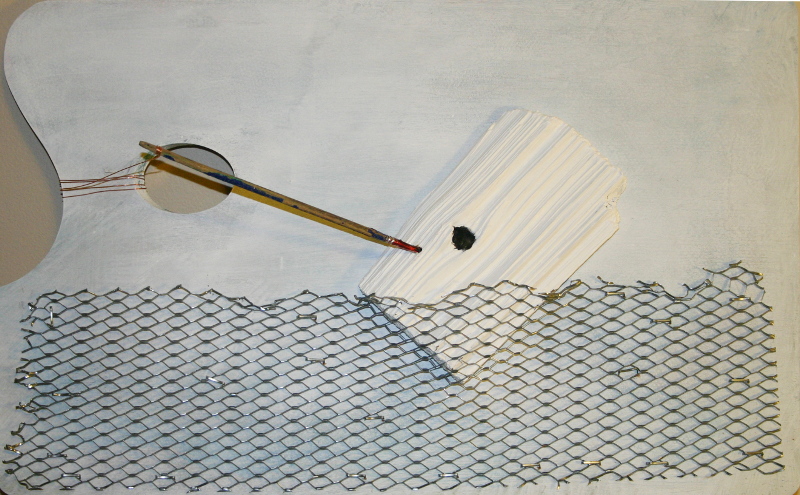
Aaaaannnd…
…I finished a portrait of jenny’s doctor, and her partner, today.
(The pic sucks, but you get the idea–Jenny has better ones.)
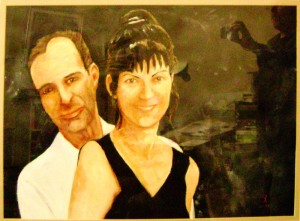
As Promised…
The Sketchbook Project
Have I mentioned that I joined an art exhibition called the Sketchbook Project–well I have. Here’s a little about it:
We send you the sketchbook, you make the art. Then Art House is taking all the sketchbooks on a 6 city tour to galleries and museums across the U.S. The goal of the exhibition is to encourage anyone to create artwork and build a collective of sketchbooks made by artists from all over the world.
More info, and a sign up form (it costs $18), if you wanna do it at Art House Co-op. The theme is “Everyone We Know.”
I finally got my book today, and have already done the cover, and a couple of sketches. WOOT!
I’ll post some picks tomorrow.
Mark Twain’s Rules of Writing
These rules are from Mark Twain’s wicked 1895 essay “Fenimore Cooper’s Literary Offenses”, which is mainly a criticism of Cooper’s story “The Deerslayer”.
Twain wrote: “I may be mistaken, but it does seem to me that ‘Deerslayer’ is not a work of art in any sense; it does seem to me that it is destitute of every detail that goes to the making of a work of art; in truth, it seems to me that ‘Deerslayer’ is just simply a literary delirium tremens.”
- A tale shall accomplish something and arrive somewhere.
- The episodes of a tale shall be necessary parts of the tale, and shall help develop it.
- The personages in a tale shall be alive, except in the case of corpses, and that always the reader shall be able to tell the corpses from the others.
- The personages in a tale, both dead and alive, shall exhibit a sufficient excuse for being there.
- When the personages of a tale deal in conversation, the talk shall sound like human talk, and be talk such as human beings would be likely to talk in the given circumstances, and have a discoverable meaning, also a discoverable purpose, and a show of relevancy, and remain in the neighborhood of the subject in hand, and be interesting to the reader, and help out the tale, and stop when the people cannot think of anything more to say.
- When the author describes the character of a personage in his tale, the conduct and conversation of that personage shall justify said description.
- When a personage talks like an illustrated, gilt-edged, tree-calf, hand-tooled, seven-dollar Friendship’s Offering in the beginning of a paragraph, he shall not talk like a minstrel at the end of it.
- Crass stupidities shall not be played upon the reader by either the author or the people in the tale.
- Events shall be believable; the personages of a tale shall confine themselves to possibilities and let miracles alone; or, if they venture a miracle, the author must so plausably set it forth as to make it look possible and reasonable.
- The author shall make the reader feel a deep interest in the personages of his tale and their fate; and that he shall make the reader love the good people in the tale and hate the bad ones.
- The characters in tale be so clearly defined that the reader can tell beforehand what each will do in a given emergency.
In addition to these large rules, there are some little ones. These require that the author shall:
- Say what he is proposing to say, not merely come near it.
- Use the right word, not its second cousin.
- Eschew surplusage.
- Not omit necessary details.
- Avoid slovenliness of form.
- Use good grammar.
- Employ a simple, straightforward style.
